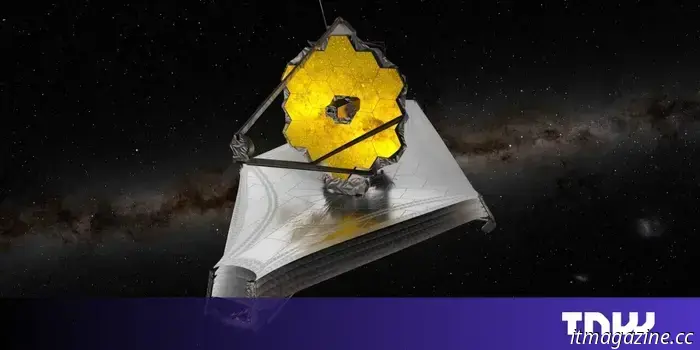
10 insights from the James Webb telescope that may influence European technology
The scientific community is in a state of shock. The recent findings from the James Webb Space Telescope — a collaborative effort between the European Space Agency (ESA), NASA, and the Canadian Space Agency (CSA) — not only amaze but also challenge our fundamental beliefs about the workings of the universe. It appears that the universe may not adhere to the principles we believed we understood.
What implications could this hold for space exploration, technology, and future deep tech? What considerations should space technology companies, inventors, investors, and venture capital funds in Europe be contemplating in light of these discoveries?
At Beyond Earth Ventures, we focus on startups that are working on rockets, satellite AIs, space biotechnology, and breakthroughs in fusion technology. However, being space enthusiasts, we also delve deeper than just financial metrics and business proposals, exploring the areas where established theories falter and mysteries arise.
The $10 billion Webb telescope, launched from Europe’s spaceport in French Guiana, is designed to observe the universe's oldest light. Since its launch in 2021 and full operation from July 2022, Webb has proven to be more than just an enhancement of Hubble; it acts as a time machine, an infrared observer, and, crucially, a disruptor of stable scientific beliefs.
Its findings indicate we are on the verge of a significant transformation in theoretical physics and cosmology. Over the coming years, we can anticipate a surge of new, audacious theories, updates to textbooks, and renewed discussions on topics ranging from gravity to the genesis of galaxies.
Before discussing the ramifications, let's take a broader view of Webb's major discoveries that challenge our perceptions of the universe. Some of these findings are already instigating theoretical dilemmas, while others could pave the way for new fields of inquiry and innovation.
Major revolutions often arise when theoretical frameworks do not align with empirical data. This has been the case with quantum mechanics, general relativity, and DNA. Perhaps the Webb Telescope will be another catalyst for such a paradigm shift.
Here are ten discoveries from Webb that challenge our existing theories about the universe:
1. The universe is expanding faster than expected.
While we were aware of the "Hubble Tension," Webb’s measurements have confirmed it with greater accuracy. Current calculations indicate the universe is expanding at 70–76 kilometers per second per megaparsec (km/s/Mpc), significantly outpacing the 67 km/s/Mpc predicted by early universe models based on the cosmic microwave background. This discrepancy suggests potential flaws or oversights in our physical understanding, possibly calling for modifications to dark energy or the introduction of new forces.
2. Galaxies matured too quickly.
Webb has detected fully-formed, massive galaxies just 500–700 million years post-Big Bang. Their size matches that of the Milky Way, but their early emergence contradicts established science, as standard cosmological models suggest such galaxies shouldn’t exist yet. This implies either a missing explanation or that the early universe operated with greater efficiency than previously assumed.
3. Dark matter theories may need reevaluation — MOND might be correct?
This contentious point posits that Webb’s results align more with Modified Newtonian Dynamics (MOND) than with current dark matter theories. Traditionally an underdog, MOND’s predictions about the brightness and size of early galaxies suggest a need to reconsider the influences shaping the cosmos.
4. The formation of black holes was unexpectedly ambitious.
Webb found a black hole with a mass of nine million suns merely 570 million years after the Big Bang. Current theories struggle to explain the rapid growth of such massive black holes within the early universe, indicating the possibility of undiscovered physics or novel formation pathways.
5. Complex chemistry existed earlier than anticipated.
The galaxy JADES-GS-z14-0, at just 300 million years old, already has a high abundance of elements like nitrogen, typically accumulated over billions of years and multiple star generations. This raises questions about whether the first stars formed and died more swiftly than presumed or if the Big Bang provided more “pre-built” elements than expected.
6. Stars formed at an astonishing pace.
Observations by Webb reveal that early galaxies served as intense, explosive star factories, contrary to expectations of slow, gradual star formation. Instead, star formation appears to have occurred in massive bursts, prompting a reevaluation of existing models.
7. Planetary disks have longer lifespans than previously believed.
While it was thought that planet-forming disks around stars dissipate quickly, Webb shows that they can persist for 20–30 million years. This extended development time could facilitate the formation of life-supporting exoplanets.
8. Early galaxies exhibited unusual shapes.
Many initial galaxies appear elongated, resembling pool noodles or surfboards rather than the expected small, round formations. This challenges the standard model, as Webb suggests that galaxies organized themselves earlier and in unexpected forms, necessitating a reassessment of early universe dynamics.
9. Current models of
Other articles
10 insights from the James Webb telescope that may influence European technology
Alexandra Vidyuk, the CEO of Beyond Earth Ventures, examines the advancements that the James Webb telescope may deliver to the technology sector in Europe.
